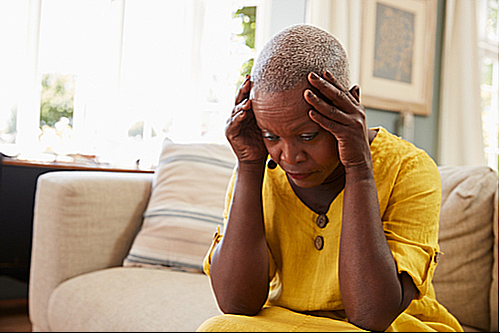Soul Train host Don Cornelius, songstress Phyllis Hyman, musician Donny Hathaway and soap opera star Kristoff St. John were all celebrated African Americans who took their own lives. The unexpected suicides of all these stellars who appeared to be living their best lives shocked us to the very core.
Unfortunately, the tragic self-destructive event that can leave devastating emotional wounds for its victims’ families is on the rise.
Historically, the rates of completed suicide among African American individuals have been relatively low. However, the past 50 years have witnessed a significant rise in suicide rates among Blacks. African American females are more likely to attempt suicide, but the males are more likely to complete the act.
It is also extensively documented that the highest suicide numbers for all U.S. groups exist among older adults (over age 65).
According to the Centers for Disease Control and Prevention, many who complete the act of killing themselves do not reveal their intent to a health professional before doing so. If they communicate a plan to anyone, it is more likely to a close friend or family member.
Despite the published facts, there is a terrible misconception that Blacks do not commit suicide. In her book Black Pain: It Just Looks Like We’re Not Hurting, author Terrie M. Williams discusses how the stoicism Black people are taught can only lead to denial, isolation, and unspoken depression. Essentially, our inability to speak our pain is killing us.
When a group of people is forced to deal with stressors such as systemic racism, police brutality, and gaps in healthcare, education, wealth, and unemployment, they can become at risk for developing mental illness. Blacks are not exempt from developing emotional problems, and suicide is mainly caused by a mental illness, depression.
What can lead to suicide?
A number of mental health associated factors can place someone at a higher risk for suicide:
- depression, psychosis, schizophrenia, or anxiety
- a significant loss, like the death of a spouse, child or loss of a job
- drug/alcohol abuse
- life stressors like a separation/divorce, financial problems
- an illness or medication that causes mood swings
- exposure to the suicidal behaviors of others, such as friends, peers, or celebrities
- loneliness
- aging
African Americans and suicide statistics
- Firearms are the primary method of suicide regardless of age or sex, then suffocation.
- Suicide rates among Black girls ages 13-19 nearly doubled from 2001 to 2017. For Black boys in the same age group, over the same period, rates rose 60 percent. In Black children ages 5 to 12, the suicide rate is two times higher than white children.
- Black men and women have similar suicidal behavior rates to whites, including serious thoughts of suicide, making suicide plans, attempting suicide, and needing medical attention for attempted suicide.
Are there suicide warning signs?
According to mental health experts, folks who take their own lives don’t really want to die; they are only seeking to end their pain. There are, however, sure signs and behaviors before a suicide attempt, such as:
- reclusiveness
- drastic behavioral changes like a calm after a period of anxiety
- disinterest in activities they used to love
- change in sleeping and eating habits
- sudden difficulty coping with workload
- dwelling on death, suicide, or in harming themselves
- talking about needing to get their affairs in order
- erratic mood swings
- researching ways in which to kill themselves (pills, guns, hanging)
- an increase in alcohol or drugs to dull emotional pain
- reckless behaviors (drunk driving or unprotected sex)
Treatment
Folks who decide to take their own lives may not seek the emotional help needed because:
- They are convinced no one can help them
- They don’t feel compelled to discuss what has broken them
- They’ve decided asking for help is a waste of time
- They don’t know where to turn to seek help
Therapy is crucial for someone who is contemplating suicide. A mental health professional can evaluate and treat someone who is at risk of suicidal behavior.
Sadly, one-third of people who attempt suicide and are unsuccessful will try again within a year. About 10% of people who make threats or try to take their own life will eventually kill themselves.
Acknowledging pain is scary. But there is a balance between dark and light. A sign of strength is asking for what you need. If you or someone you know is talking about suicide, know that help is available. Contact the National Suicide Prevention Lifeline at 1-800-273-8255 (1-800-273-TALK), where you can receive free and confidential support anytime day, or night. Call the local emergency number (such as 911) right away if someone you know has attempted suicide. DO NOT leave the person alone, even after you have called for help.











